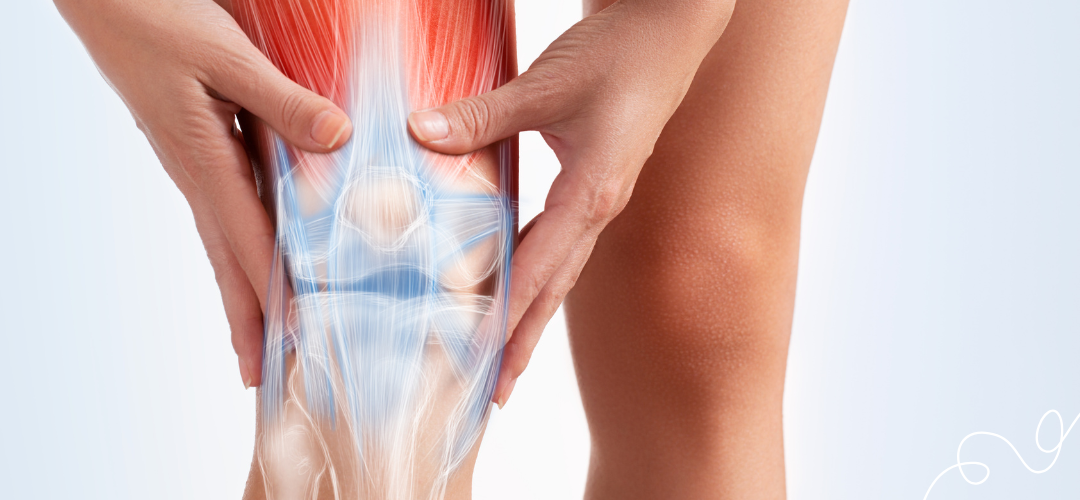Can Myofascial Release help manage Ehlers-Danlos Syndrome?
Can myofascial release help manage Ehlers-Danlos Syndrome? It has the potential to help alleviate some symptoms, but it is not because it has any meaningful influence on the facial system. What is the most likely reason it can help? The benefits are most likely neurological.
What kind of benefits could someone with Ehlers-Danlos Syndrome experience after receiving a myofascial release treatment? It may help with the management of symptoms such as chronic pain and joint instability. One theory is myofascial release might activate gate control theory, which is the process where non-painful pressure interferes with pain signals. Additionally it may help by releasing endorphins, the body’s natural painkillers, or help to improve how the brain perceives the body’s position in space (proprioception). Myofascial release may also help relax muscles, lower stress levels, and improve sleep, this may be due to the upregulation of the parasympathetic nervous system of autonomic nervous system (ANS). The ANS is comprised of the sympathetic and parasympathetic systems, these are the fight/flight and rest/digest mechanisms. When the parasympathetic nervous system is upregulated it may help manage stress, and sleep disturbances which are common in EDS.
Myofascial Release for Ehlers-Danlos Syndrome?
What is Myofascial Release?
Myofascial release (MFR) is a manual therapy technique that involves applying sustained pressure to the superficial soft tissue layers of the body. The goal is to help reprogram how the brain perceives touch and movement, to alleviate pain and improve mobility. Most massage therapists believe myofascial release is the process of applying sustained pressure to the fascia to release tight bands, trigger points and adhesions to achieve the before mentioned results.
What is Ehlers-Danlos Syndrome?
Understanding Neurological Influences of Myofascial Release
The benefits of myofascial release is most likely due neuromodulation, such as altering pain perception, facilitating relaxation or changing movement patterns. [2] Additionally, through pain neuroscience education, a client’s pain, fear-avoidance, and pain catastrophization may be reduced. [3] It is my belief that through a combination of hands-on manual therapy and client education, chronic pain may be more effectively managed to promote a higher quality of life. This is why I believe it is essential that the general public and massage therapists be reeducated so they may understand the most likely reason myofascial release is an effective pain management tool.
- Gate Control Theory of Pain: This theory suggests non-painful stimuli, like the pressure from MFR, can interfere with pain signals, effectively reducing pain perception. [4] In essence this theory states that if something hurts, rub it, so the pain signal is interrupted by a pleasure signal.
- Endorphin Release: Myofascial release when experienced in the form of pleasure might stimulate the nervous system to release endorphins, the body’s natural painkillers, helping manage pain. [5]
- Autonomic Nervous System Modulation: MFR could shift the body from a sympathetic (fight-or-flight) state to a parasympathetic (rest-and-digest) state, reducing stress and promoting healing, potentially affecting heart rate variability. [6]
- Proprioceptive Feedback: It is possible that slow, sustained pressure might activate sensory receptors in the skin and muscles, thereby enhancing the brain’s understanding of body position and movement, which might improve proprioception. [7,9,10]
- Neurotransmitter Changes: Research on massage therapy, similar to MFR, shows it can reduce cortisol levels and increase serotonin, affecting mood and pain regulation. [8]
These neurological effects could be particularly relevant for EDS, given its symptom profile.
Ehlers-Danlos Syndrome Symptoms and Neurological Benefits of MFR
People with EDS often experience chronic pain, joint instability, muscle tightness, stress, anxiety, and sleep disturbances. Here’s how MFR’s neurological influences could help:
- Chronic Pain Management: EDS patients frequently have pain due to joint instability and frequent injuries. Myofascial Release could reduce pain perception through gate control and endorphin release, improving quality of life.
- Improved Proprioception: Poor proprioception in EDS contributes to joint instability and injury risk. Myofascial release might enhance sensory feedback, helping patients better control movements and avoid positions that lead to dislocation. [11]
- Reduced Muscle Tension: Ehlers-Danlos Syndrome patients might have tight muscles due to bracing or guarding against instability. MFR could reduce muscle tone through neurological relaxation, alleviating pain and improving movement.
- Stress and Anxiety Reduction: Living with a chronic condition like EDS can be stressful. MFR’s relaxing effects could help shift to a parasympathetic state, reducing anxiety and improving mood, which is supported by studies on massage reducing cortisol levels.
- Improved Sleep: Sleep disturbances are common in Ehlers-Danlos Syndrome due to pain and discomfort. Better relaxation from MFR could lead to improved sleep, enhancing overall well-being.
- Autonomic Nervous System Regulation: EDS is associated with autonomic dysfunction, like orthostatic intolerance. If MFR can regulate the autonomic nervous system, it might ease related symptoms. [12]
These benefits don’t rely on physical changes to the fascia.
